What is the circular economy? It’s a closed loop of taking, making and re-using – as opposed to a linear “take-make-waste” approach.
The problem with the linear model is clear. When we treat raw materials (such as wood and water) and energy as infinite, we end up with waste. Waste costs money – which in itself is waste, especially when you consider the costs of landfilling, the loss of reusable materials, and the livelihoods that could have been supported. There are also losses at the expense of the environment – greenhouse gas emissions when waste degrades.
The circular economy, however, is based on three core principles: reducing waste by design, retaining materials in circulation and restoring the systems from which resources are extracted.
Contrary to popular belief and opinion, the paper industry has for many years adopted the circular approach.
Circles in the forest
We should all know by now that paper comes from the wood of trees – even the fibres in recycled paper came from a tree at some point in their lives. In South Africa’s case, these trees are sustainably farmed in plantations, with stringent management of their impact on water, soil, neighbouring indigenous landscapes and biodiversity.
Gone are the days of detrimental, wall-to-wall afforestation. Today, forestry companies work in tandem with wetlands, riparian zones and high conservation value areas to create a mosaic of planted trees and conservation spaces.
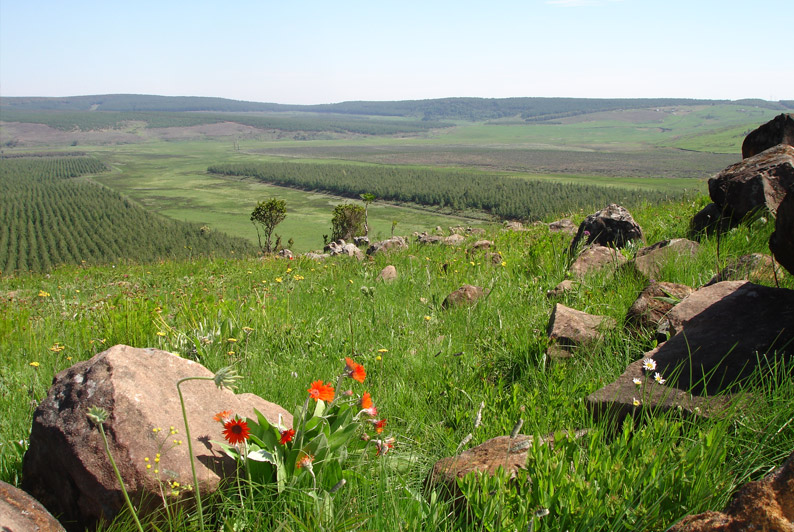
(Credit: Mondi) Mondi manages a number of biodiversity action areas such as this one which overlooks its Lake Merthley plantation in KZN. This is a prime example of a new generation plantation.
Sustainable forest management balances economic, social and environmental needs. While forestry practices optimise the land’s ability to mitigate climate change through carbon sequestration, they also act as buffers for protected indigenous areas.
Depending on the species – usually eucalyptus or pine – these trees take around seven to 10 years to reach maturity. The reason we use exotic species is because they are fast-growing and we cannot – and will not – use indigenous trees for wood or paper products.
Currently, South Africa has 850 million trees growing over 676 000 hectares reserved for pulp and papermaking. Here’s the rub: less than 10% of this total area (67 600 hectares) is harvested during the year. The same area is replanted with new trees – saplings – often at a ratio of two trees for each one harvested.
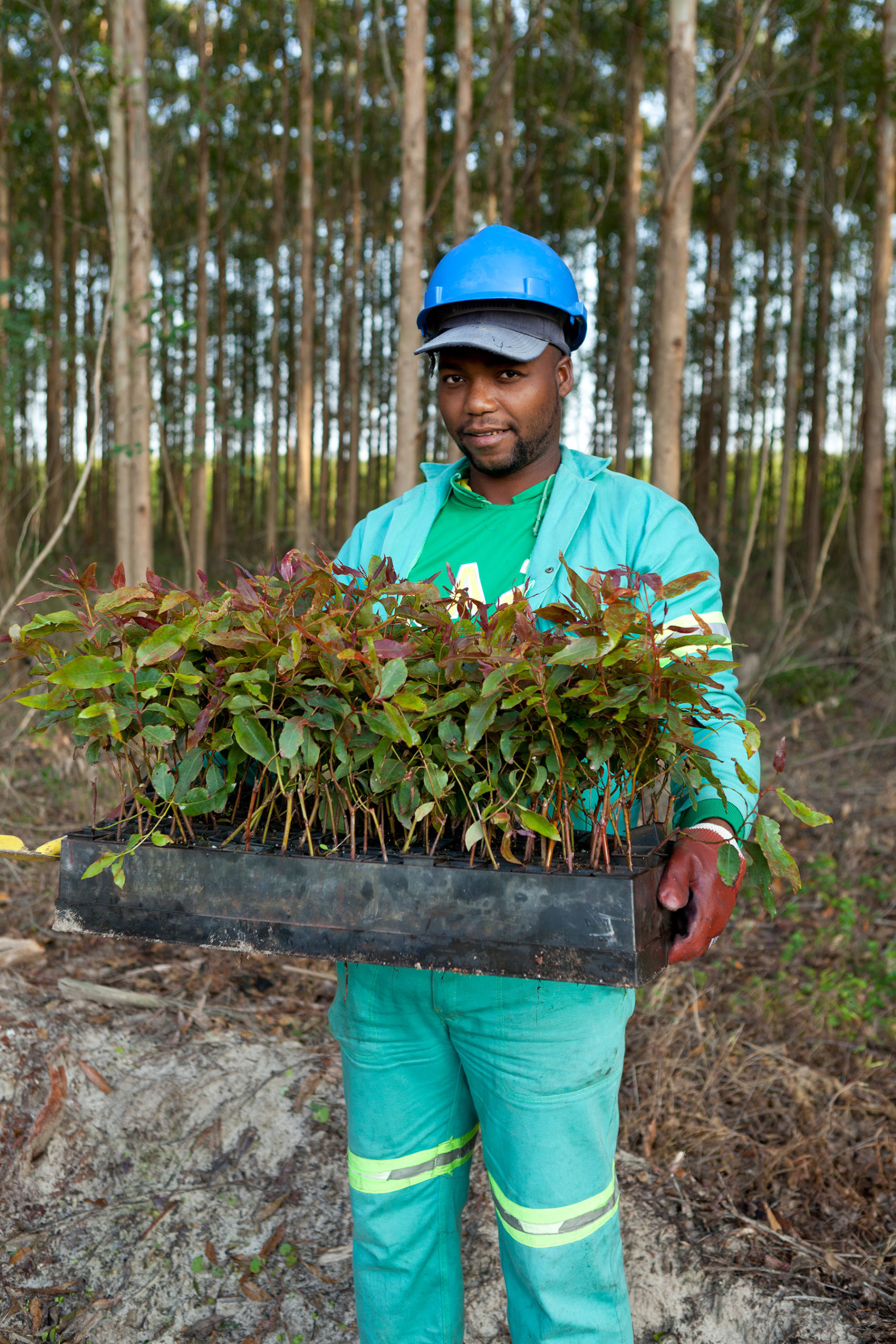
(Credit: Sappi) Trees are planted, grown and harvested in rotation, which ensures there are also trees of different ages growing and storing carbon.
This is the first circle: plant, grow, harvest, replant…
The circle of life
The circular economy in forestry extends to leaving forest residues in-situ as a mulch for the next generation of trees. After harvesting, bark, limbs, leaves and small parts of the harvested trees are left on the forest floor, offering sustenance and refuge for creatures that aid in the decomposition of organic matter, which in turn attracts birds – and so we have another circle.
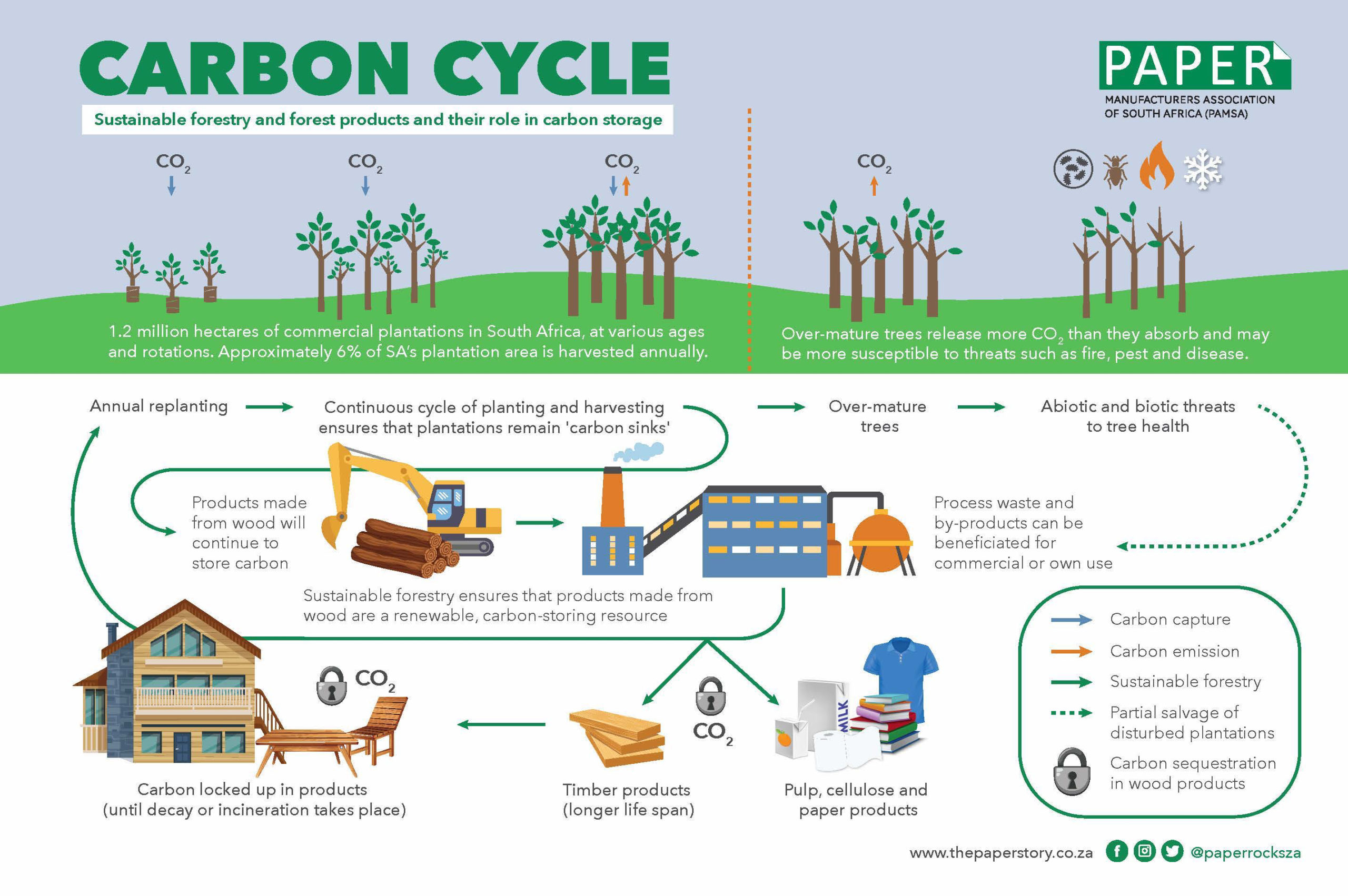
In addition, through photosynthesis, trees remove carbon dioxide from the atmosphere and convert it into food for growth. They also take up water, from the ground or from rainfall. They keep the carbon locked up in their fibres and give us back the oxygen, and some water is also returned to the atmosphere through transpiration.
Circular production processes
Even pulp and paper mills operate in a closed loop process, by using natural resources efficiently – often more than once.
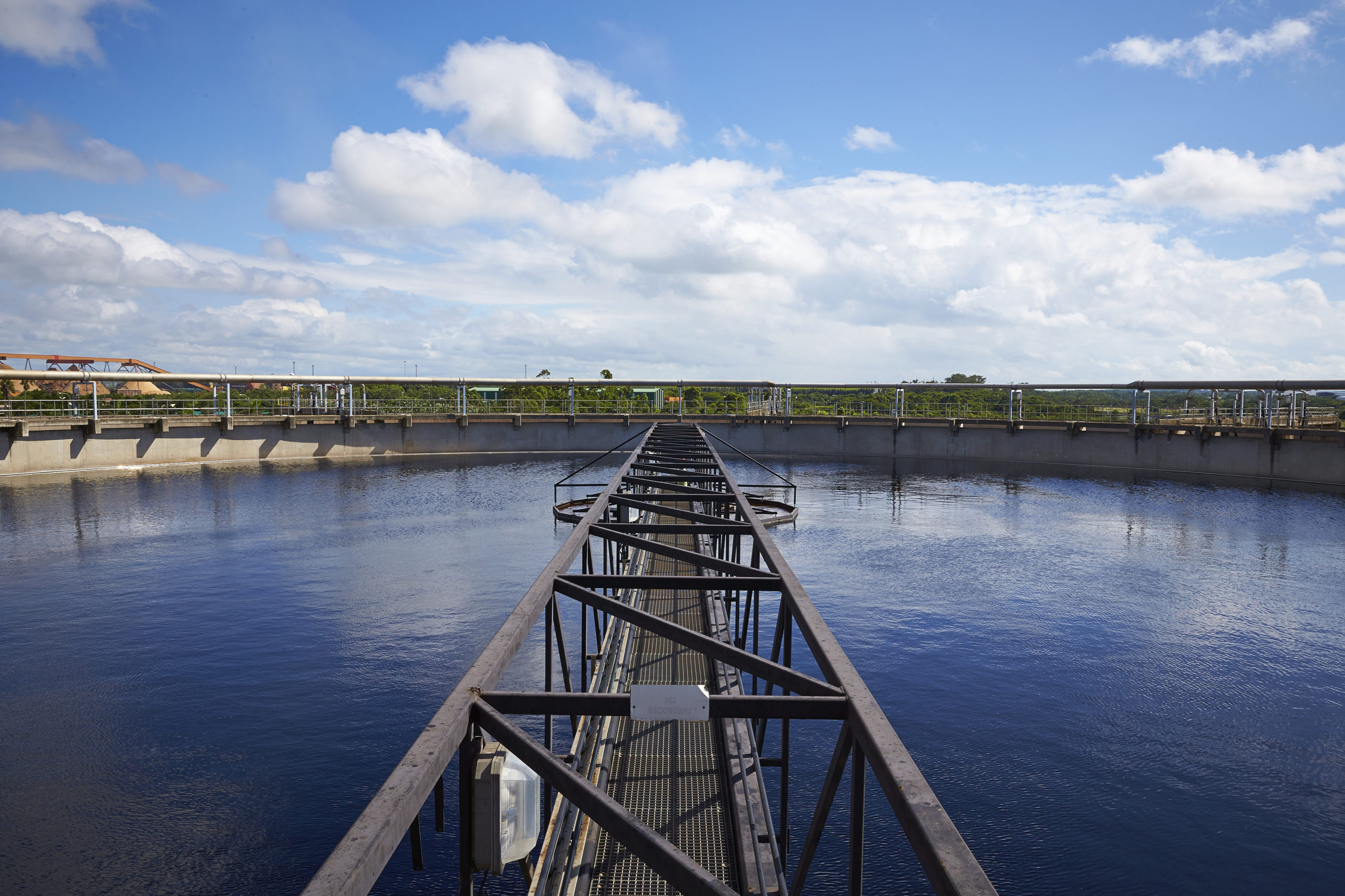
(Credit: Mondi) Process water is recovered, treated and clarified before being returned to the mill.
Process water is reused and recycled, lost fibre is recovered and reused, and spent chemicals are recovered for energy production. Even bark – a biomass – is used to power boilers, producing steam that generates electricity.
This sees us being better at using more of the tree, ensuring little goes to waste.
Circling the bin
Once pulp and paper are made into what we know – office paper, magazines, books, pizza boxes, cereal boxes, cardboard boxes, newspapers, milk and juice cartons, paper cups – the circle starts to hit home. Office paper can be printed on both sides, and boxes can be reused as storage. Magazines and newspapers are used by school children for projects and posters.
Importantly, paper fibres can be recycled up to seven times; how we dispose of paper products creates another circle. With a four-year average recovery rate of 70%, paper is the second most recovered material in South Africa.
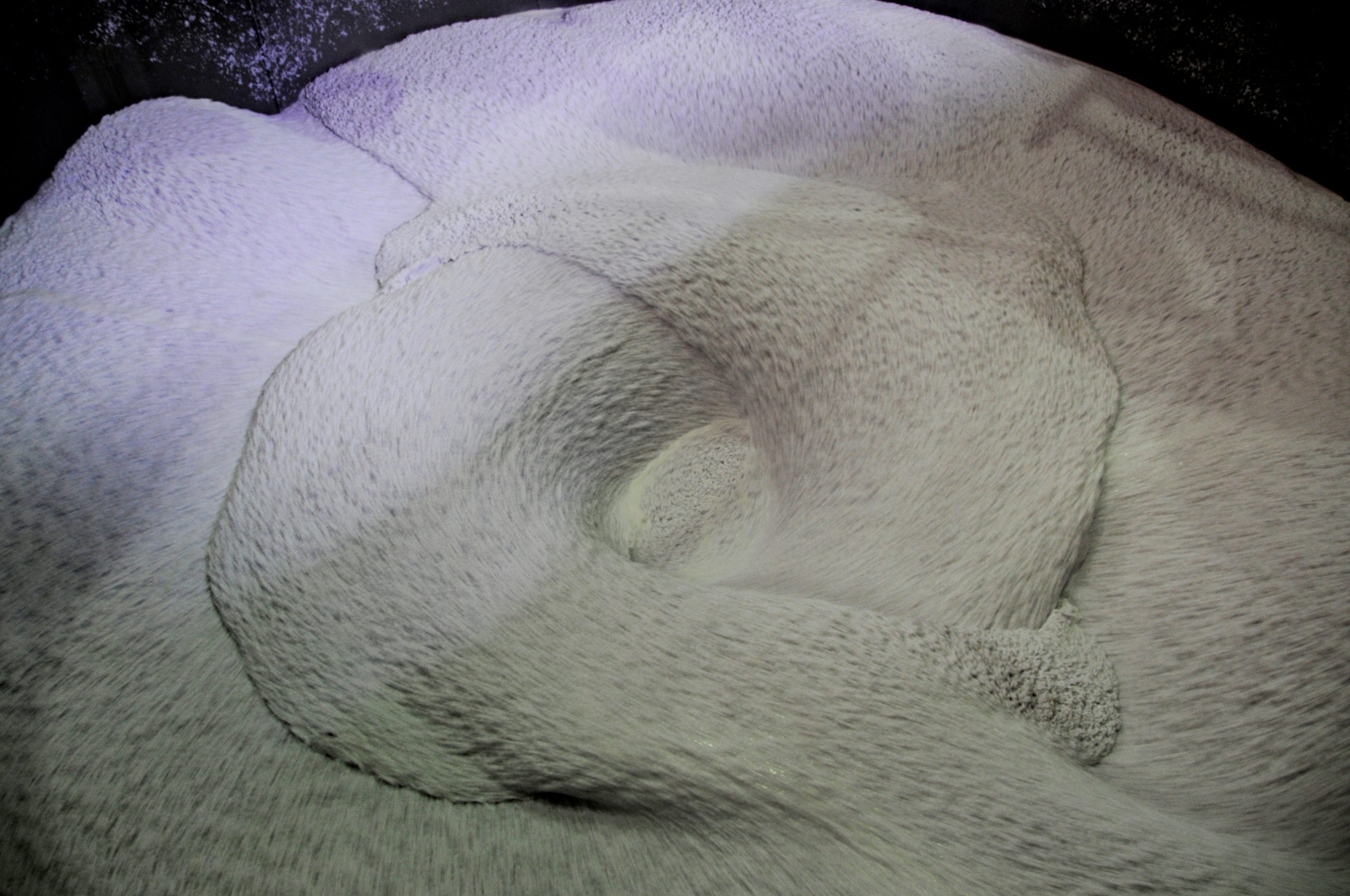
By putting them in our rubbish bin, paper products will go to landfill – or if they are lucky to be retrieved by a waste collector, they might get to a recycling mill. But this requires that people apply some basic practices to recycling paper.
Ideally, we want paper products separate from wet waste – this keeps them clean for recycling. Even the simple act of placing recycling in a separate bag or box for a waste collector who sells these back to a recycling mill makes a considerable difference.
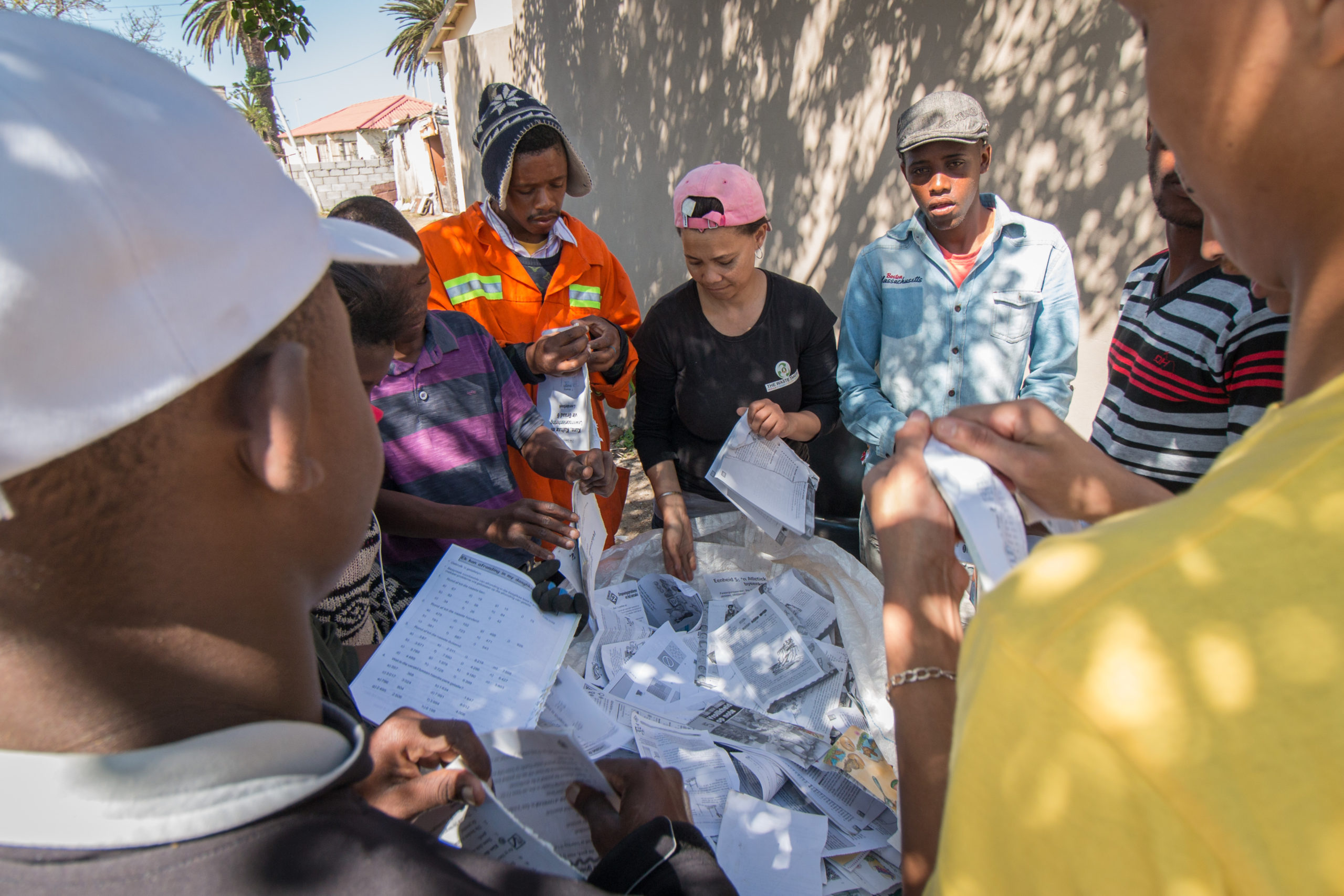
Mary Phillips and her company Waste Takers provide a recycling collection service in Port Elizabeth.
Recovered paper is reprocessed and made into corrugated boxes, tissue, cereal boxes and moulded protective packaging that comes back into our homes, and which we use and recycle. And so the paper cycle – or circle – continues. The carbon also stays locked up for longer when paper is recycled.
Circles in the laboratory
This is where our circles get really exciting. Some wood-based products are already in circulation in everyday life. Dissolving wood pulp is used in food, pharmaceutical and textile industries. Cellulose is used as a binder, emulsifier and filler. It’s in our low-fat yoghurt, cheese and ice cream; it’s in the bathroom cabinet in our lipsticks and vitamins.
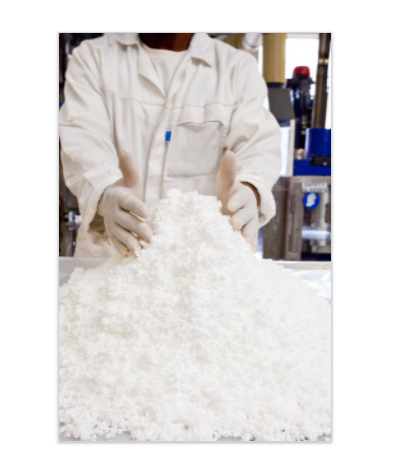
(Credit: Sappi) Dissolving woodpulp
Our sector can extract xylitol from wood to make non-nutritive sweeteners, and it can also make bricks and bio-composites from paper sludge, the leftovers from the paper recycling process when fibres become too short for use.
We can make plastic, membranes and films with cellulose, and biodegradable alternatives to fossil fuels from lignin. We have students developing biodegradable fruit fly attractant sheets from nanocellulose, and controlled release fertiliser coated with cellulose, starch and diatomite (silica). We can also make attractants for mosquitoes from cellulose-based materials, to help society in the fight against malaria.

(Credit: Sappi) Wood and its components, along with process waste from the pulping and paper making process, offer viable alternatives to fossil-fuel based materials.
By increasing the circularity in our sector, we can ensure that we not only increase our contribution to society, the economy and employment, but the forest products sector can be part of the solution to climate change and green economic recovery.
Consumers can play their part too. By using pulp and paper products that are certified and responsibly produced, and by recycling paper products, we can practice sound environmental stewardship and be part of the circle. DM/BM
About the author:
Jane Molony is the executive director of the Paper Manufacturers Association of South Africa (PAMSA), the industry association representing 90% of the country’s pulp, paper, paperboard and tissue manufacturers. PAMSA serves to promote the precompetitive interests of its members in the areas of education, skills development, environment, research and advocacy. Jane herself has been a long-serving advocate for the paper industry, in various capacities over the years: executive director of the Technical Association of Pulp and Paper in South Africa (TAPPSA), editor of TAPPSA Journal, chair of the South African Book Development Council, president of the International Council of Forest and Paper Associations, member of the Forest Sector Charter Council and board member of the Fibre Processing and Manufacturing SETA.















 Become an Insider
Become an Insider
Interesting, thank you!